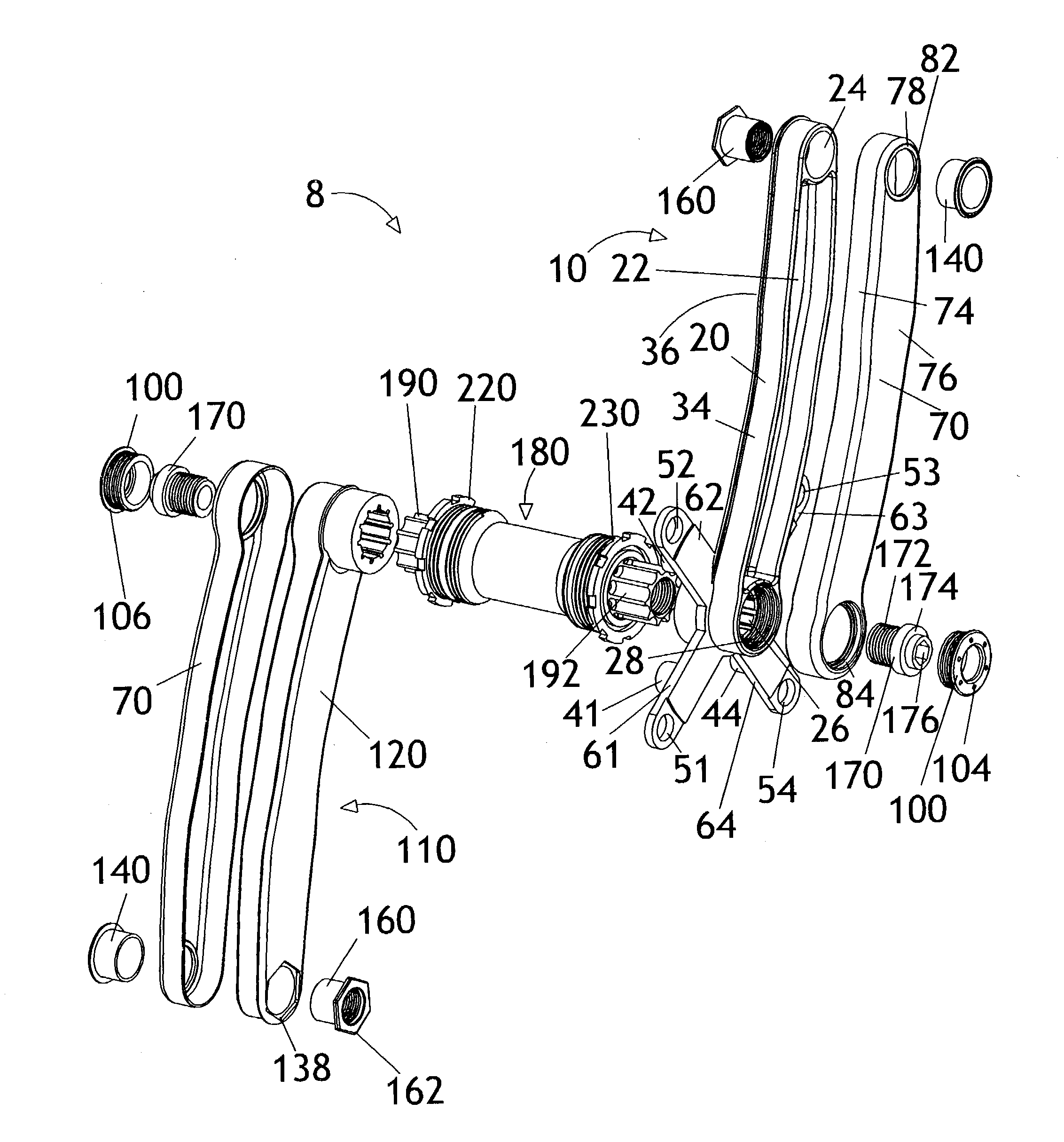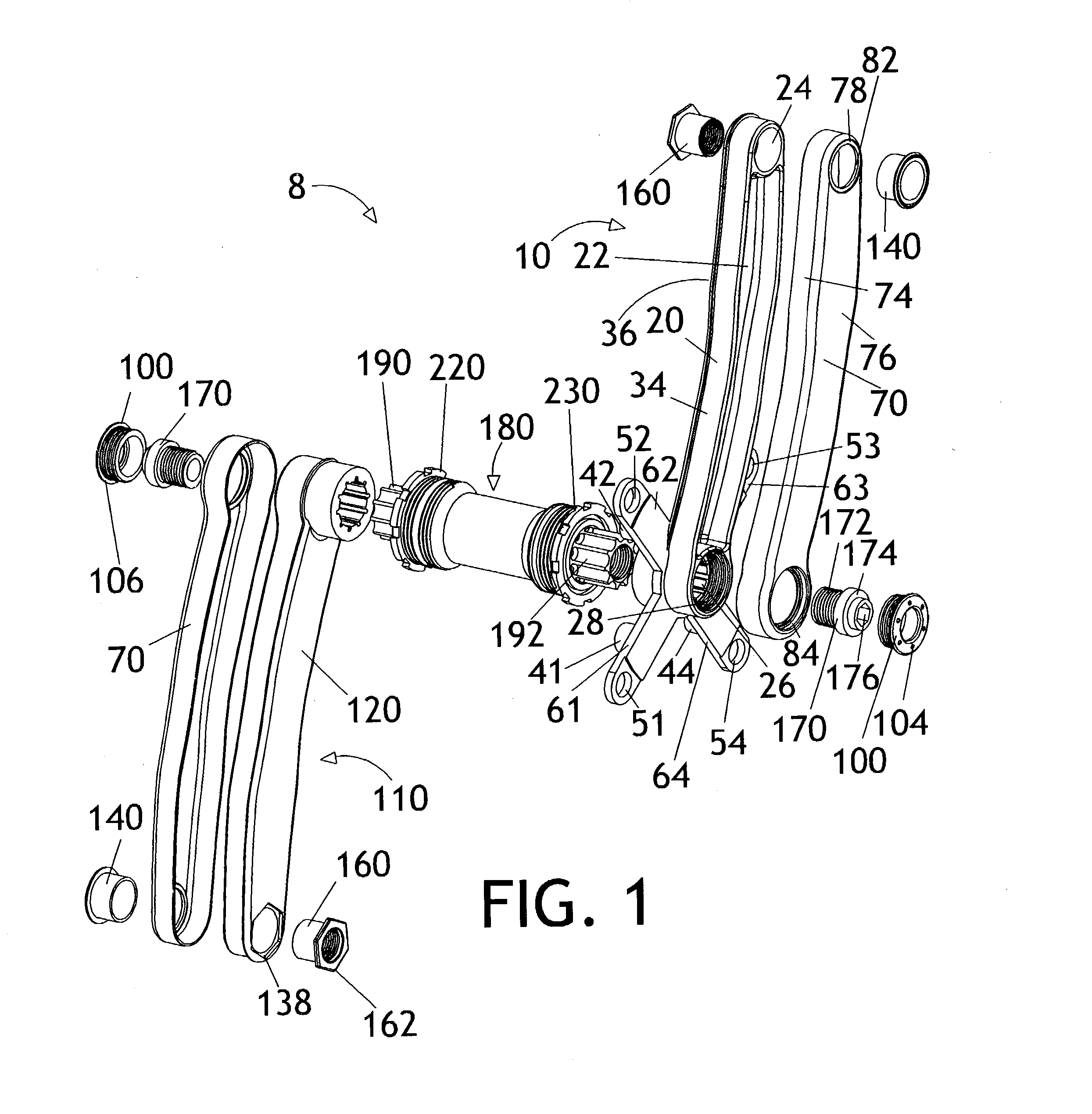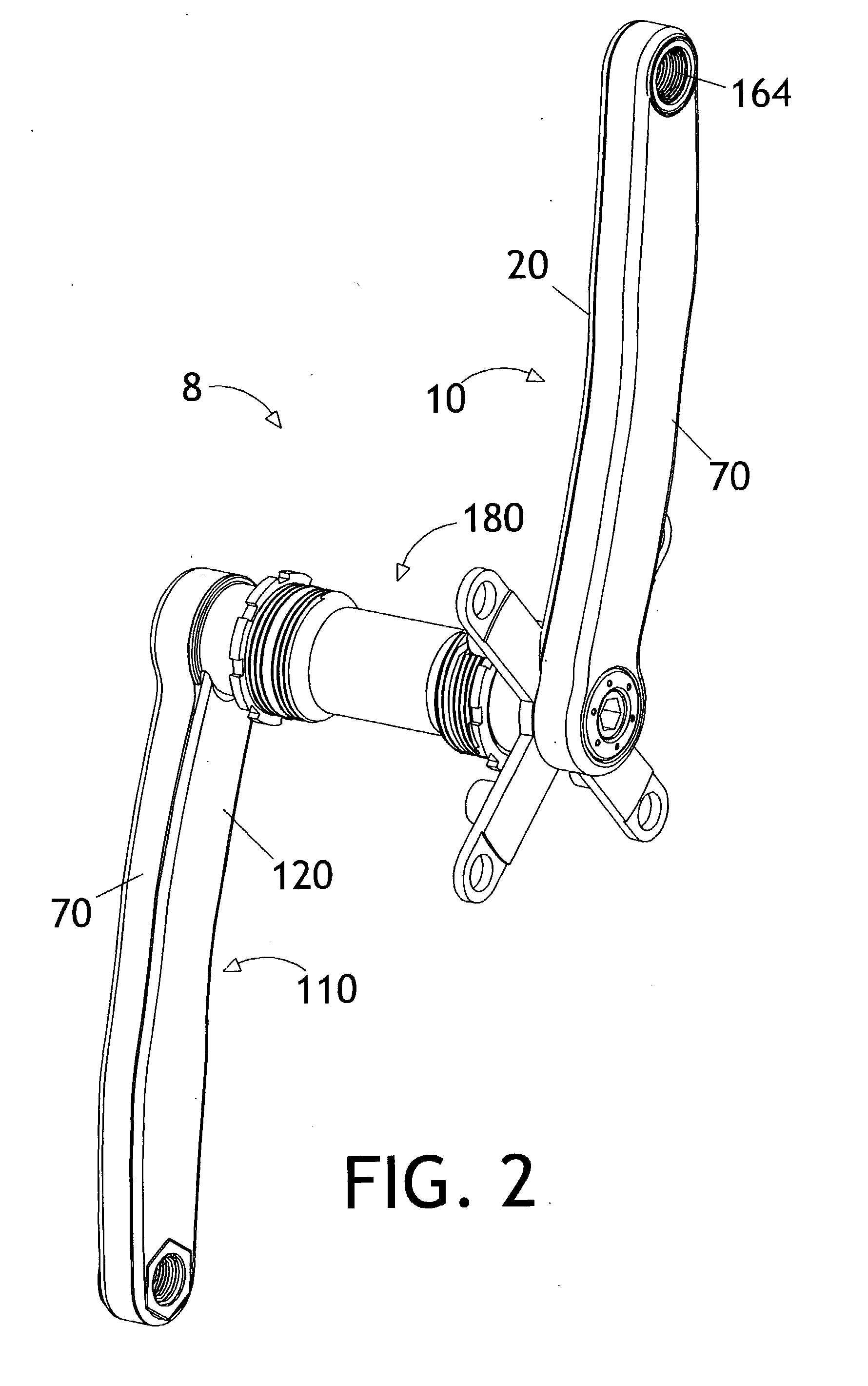This can cause reliability problems for any joints or welds that are near the crank spindle.
All of these processes to make tubular cross sections are relatively expensive.
The proprietary processes require expensive research and development, expensive proprietary equipment, and careful
process control.
Also, there are limits to how carefully the hollow area can be controlled, so there are limits to how efficient the crank can be designed.
Welding two shells together is a labor intensive process, and for aesthetics, usually requires expensive post finishing work to hide the aesthetics of the weld.
Welding a tube of steel or
titanium or aluminum to end components is expensive because it requires carefully fixturing and
welding many components together (i.e.:
welding the tube to a threaded boss and end cap on one end, and welding the other end of the tube to a spider
assembly).
Welding can also decrease the strength of the material near the weld.
The transitions from the
solid end portions to the tubular portion of existing crank arms are often abrupt and with sharp edges or corners.
Some extremely expensive high performance cranks are made of thin-walled welded tubular chromoly, steel or
titanium.
However, aluminum has some disadvantages as a material for crank arms.
Aluminum has poor
fatigue resistance compared to steel and titanium, and aluminum is difficult to
forge or cast with a hollow interior.
CNC
machining is expensive because it requires a relatively expensive CNC mill, a relatively skilled
programmer, it wastes a significant amount of material, it is a relatively slow process, and the
surface finish is rough.
Carbon
fiber (and similar) is very expensive because the materials are expensive, and the process is slow and difficult and requires
highly skilled workers.
Welding can be expensive and can weaken the material in the vicinity of the weld.
Higher end crank arms (whether
solid aluminum or hollow) typically require extensive finishing (
polishing or CNC work) for aesthetic reasons and this adds substantially to the cost.
Locating a joint near a region of maximum
bending moment increases the likelihood of failure unless additional material thickness is provided.
Bezin's crank arm also suffers from an abrupt transition where the thin tube meets the
solid lug, producing a
stress concentration.
There is no provision for optimizing the configuration of the components to reduce the
stress concentration.
If the crank arm is fabricated using a
welding process, it is difficult to obtain proper
weld penetration in the heavy lug without overheating the thin tube.
Girvin discusses configuring the redundant doubler plate to reduce
stress concentration at the upper welded interface, but does not address the abrupt transition where the tube otherwise meets the lug.
Girvin discusses using a tapered tube to increase the
section modulus in regions of
high stress, but does not provide for a varying wall thickness.
Girvin does not address the issue of satisfactorily welding a thin-wall tube to a more massive lug.
Girvin provides no way to adapt to lightweight alloys.
The welded surfaces are substantially parallel to the
long axis of the crank arm, which results in a relatively large weld area, long
processing time and high fabrication expense.
There is relatively little space enclosed by the box-beam, owing to the relatively thick walls, which results in a heavy, stiff and rigid crank arm.
Yamanaka discusses shaping the
long axis of the groove into a "ship
hull shape" to better distribute the stresses in the crank arm, but provides no other means of optimizing the crank arm.
Yamanaka's crank arm, however, requires a relatively expensive and complex manufacturing process and has limited control over the wall sections (and thus the
maximum size and shape of the hollow cavity).
For example, the single-use cores would be expensive and
time consuming to make.
Mizobe's crank arm, however, requires a relatively expensive and complex manufacturing process, has limited control over the wall sections (and thus the
maximum size and shape of the hollow cavity), and has the added weight of an internal filler.
This embodiment suffers the same disadvantages as the first embodiment except for the lack of filler material weight and requires the additional step of removing the filler material.
Chiang describes in his U.S. Pat. No. 6,508,002 that such a prior art bicycle crank arm as described in his '923 patent is neither cost-effective nor durable in view of the fact that the process of fastening the head portion and the pedal hole portion with the hollow crank body is rather time-consuming and that the head portion and the pedal hole portion are apt to break away from the hollow crank body.
Chiang's crank arm, however, requires a relatively expensive and complex manufacturing process and has limited control over the wall sections (and thus the
maximum size and shape of the hollow cavity).
The box will feel flimsy and weak.
 Login to View More
Login to View More  Login to View More
Login to View More 


